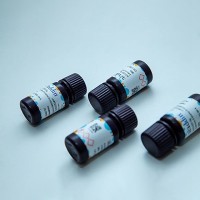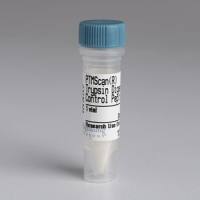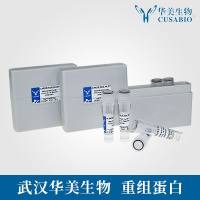Preparation of Defined Human Embryonic Stem Cell Populations for Transcriptional Profiling
互联网
- Abstract
- Table of Contents
- Materials
- Figures
- Literature Cited
Abstract
This unit describes a useful approach to preparing highly reproducible samples of human embryonic stem cell (hESC) total RNA suitable for transcriptional profiling from heterogeneous mixtures of cells containing undifferentiated hESC and differentiated cell types. In this unit, fluorescence?activated cell sorting (FACS) is used to sub?fractionate hESC populations on the basis of their levels of co?expression of two previously published hESC surface markers, CD9(TG30) and GCTM?2. This sub?fractionation allows for the separation of undifferentiated hESC (CD9hi, GCTM?2hi) from the early stages in hESC differentiation (CD9neg or low, GCTM?2neg or low). Curr. Protoc. Stem Cell Biol. 14:1B.7.1?1B.7.15. © 2010 by John Wiley & Sons, Inc.
Keywords: human embryonic stem cells; cell surface markers; fluorescence?activated cell sorting
Table of Contents
- Introduction
- Basic Protocol 1: Enzymatic Passaging of Cultures of hESCs
- Alternate Protocol 1: Starting hESC Bulk Culture from Maintenance Culture
- Basic Protocol 2: Harvesting hESCs from Bulk Cultures
- Basic Protocol 3: Immunofluorescent Staining of Surface Antigens on Live hESCs for FACS
- Alternate Protocol 2: Combined Detection of OCT‐4 Intracellular Expression and Other Cell Surface Markers on Fixed hESC by Flow Cytometry
- Basic Protocol 4: RNA Isolation
- Reagents and Solutions
- Commentary
- Literature Cited
- Figures
- Tables
Materials
Basic Protocol 1: Enzymatic Passaging of Cultures of hESCs
Materials
Alternate Protocol 1: Starting hESC Bulk Culture from Maintenance Culture
Materials
Basic Protocol 2: Harvesting hESCs from Bulk Cultures
Materials
Basic Protocol 3: Immunofluorescent Staining of Surface Antigens on Live hESCs for FACS
Materials
Alternate Protocol 2: Combined Detection of OCT‐4 Intracellular Expression and Other Cell Surface Markers on Fixed hESC by Flow Cytometry
Materials
Basic Protocol 4: RNA Isolation
Materials
|
Figures
-
Figure 1.B0.1 Bright‐field image of a day 7 hESC colony cultured on mouse embryonic fibroblasts that is ready to be passaged by treatment with collagenase (50×). Note the compact appearance of undifferentiated hESC in the center of the colony, surrounded by a ring of differentiated cells. View Image -
Figure 1.B0.2 Dark‐field image showing a day 7 colony prior to being transferred into bulk passage. The colony has been cut into six pieces. The largest piece has differentiated and the other five pieces are “good” pieces, with minimal visible differentiation, to be transferred into bulk culture. View Image -
Figure 1.B0.3 Typical sorting strategy for hESCs. Sorted cells were initially gated using forward and side scatter, followed by the removal of clumps and doublets by gating on single cells (FSC‐A vs. FSC‐H), nonviable cells were excluded based on propidium iodide (PI) fluorescence and, penultimately, MEF feeder cells were removed using negative selection for Thy1.2‐PE. hESC were then separated by FACS on the basis of cell surface intensity of GCTM‐2 and TG30 (CD9) into four populations: P4 (GCTM‐2neg CD9neg ), P5 (GCTM‐2low CD9low ), P6 (GCTM‐2mid CD9mid ), and P7 (GCTM‐2high CD9high ). The P4 gate is set relative to isotype controls and the P5‐P7 gates are reproducibly set based on initial experiments, using the strategy outlined in Figure . View Image -
Figure 1.B0.4 The template used to set up the FACS DIVA prior to each FACS experiment. Spherotech beads were initially gated using forward and side scatter to exclude debris. The FACS DIVA was then calibrated so that beads of known fluorescence were always gated into the same preset gates (P2 for FL1, P3 for FL2, and P4 for FL8). This ensures that the FACS DIVA is identically calibrated for each separate experiment. View Image -
Figure 1.B0.5 Data from a representative flow cytometry analysis of hESC using TG343, CD9, and OCT4. hESC were initially gated using forward and side scatter, followed by the removal of clumps and doublets by gating on single cells (FSC‐A vs. FSC‐H), nonviable cells were excluded based on propidium iodide (PI) fluorescence and, penultimately, MEF feeder cells were removed using negative selection for Thy1.2‐PE (not shown). hESC were then analyzed using the FACS DIVA for immunoreactivity to TG343, CD9, and OCT4. TG343hi TG30hi cells were 90% positive for OCT‐4, TG343medium TG30medium cells were 70% positive for OCT‐4, and TG343negative/low TG30negative/low cells were 22% positive for OCT4. View Image
Videos
Literature Cited
| Literature Cited | |
| Boyer, L.A., Lee, T.I., Cole, M.F., Johnstone, S.E., Levine, S.S., Zucker, J.P., Guenther, M.G., Kumar, R.M., Murray, H.L., Jenner, R.G., Gifford, D.K., Melton, D.A., Jaenisch, R., and Young, R.A. 2005. Core transcriptional regulatory circuitry in human embryonic stem cells. Cell 122:947‐956. | |
| Chambers, I., Colby, D., Robertson, M., Nichols, J., Lee, S., Tweedie, S., and Smith, A. 2003. Functional expression cloning of Nanog, a pluripotency sustaining factor in embryonic stem cells. Cell 113:643‐655. | |
| Filipczyk, A.A., Laslett, A.L., Mummery, C., and Pera, M.F. 2007. Differentiation is coupled to changes in the cell cycle regulatory apparatus of human embryonic stem cells. Stem Cell Res. 1:45‐60. | |
| Hough, S.R., Laslett, A.L., Grimmond, S.B., Kolle, G., and Pera, M.F. 2009. Metastable states of pluripotency in human embryonic stem cells. PLOS ONE 4:e7708. | |
| Kolle, G., Ho, M., Zhou, Q., Chy, H.S., Krishnan, K., Cloonan, N., Bertoncello, I., Laslett, A.L., and Grimmond, S.M. 2009. Identification of human embryonic stem cell surface markers by combined membrane‐polysome translation state array analysis and immunotranscriptional profiling. Stem Cells 27:2446‐2456. | |
| Laslett, A.L., Filipczyk, A., and Pera, M.F. 2003. Characterization and culture of human embryonic stem cells. Trends Cardiovasc. Med. 13:295‐301. | |
| Laslett, A.L., Grimmond, S., Gardiner, B., Stamp, L., Lin, A., Hawes, S.M., Wormald, S., Nikolic‐Paterson, D., Haylock, D., and Pera, M.F. 2007. Transcriptional analysis of early lineage commitment in human embryonic stem cells. BMC Dev. Biol. 7:12. | |
| Mitsui, K., Tokuzawa, Y., Itoh, H., Segawa, K., Murakami, M., Takahashi, K., Maruyama, M., Maeda, M., and Yamanaka, S. 2003. The homeoprotein Nanog is required for maintenance of pluripotency in mouse epiblast and ES cells. Cell 113:631‐642. | |
| Pera, M.F., Filipczyk, A., Hawes, S.M., and Laslett, A.L. 2003. Isolation, characterization, and differentiation of human embryonic stem cells. Methods Enzymol. 365:429‐446. |







